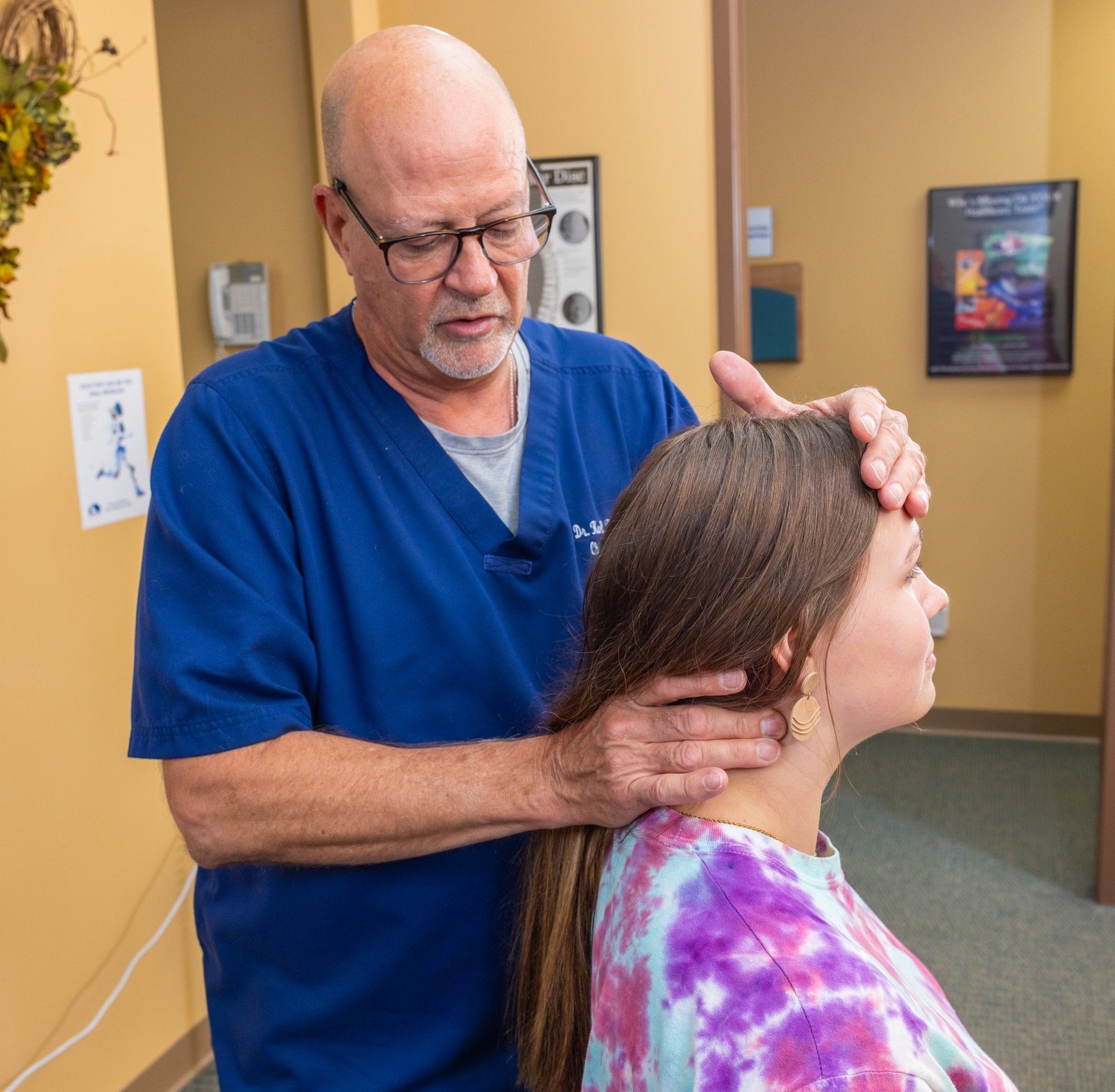Chiropractic care has long been associated with spinal adjustments, pain relief, and improved musculoskeletal health. However, a growing body of research and a dynamic neurological-based chiropractic model are shedding light on the critical role chiropractic care plays in optimizing neurological function and overall well-being.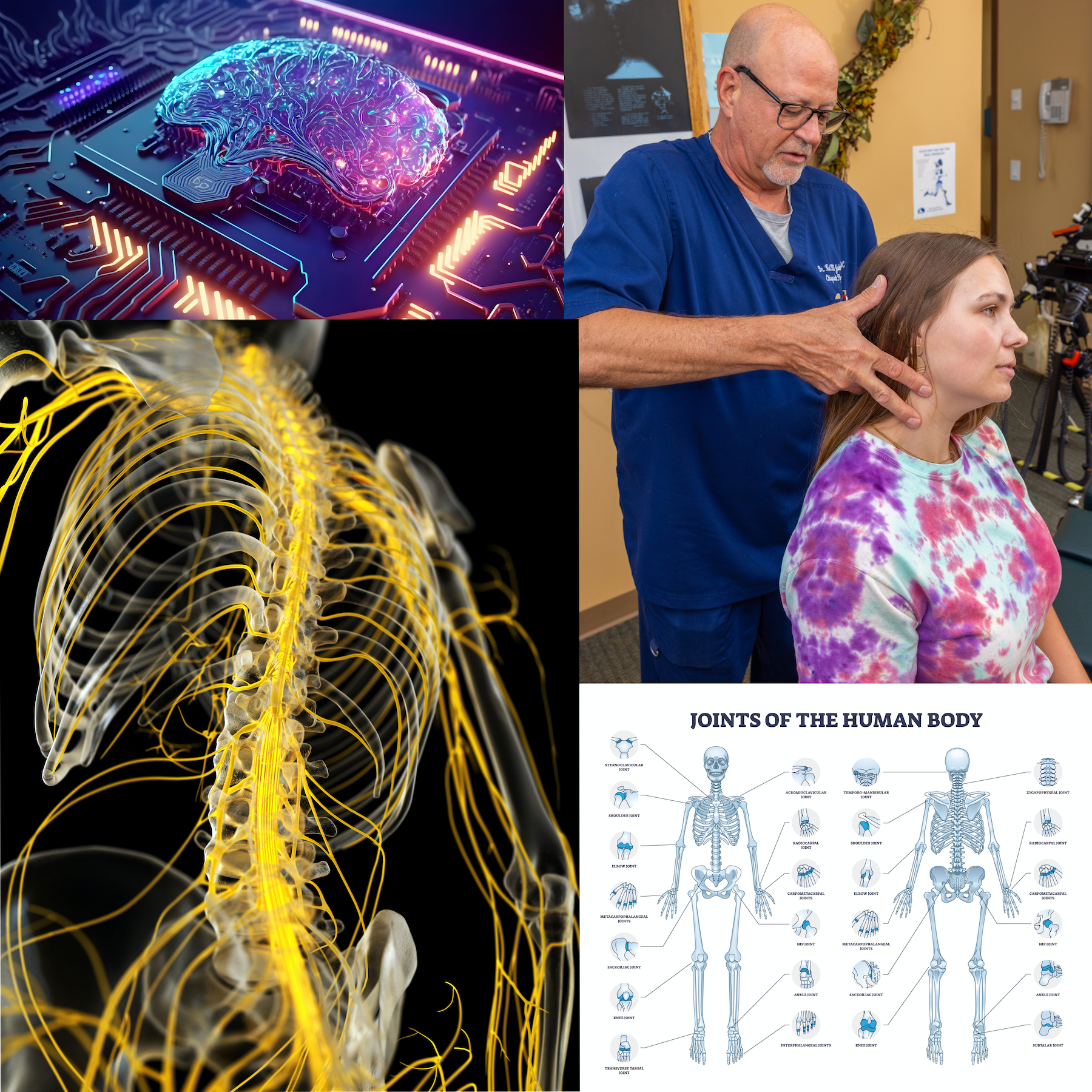
In this blog post, we will explore the dynamic neurological-based chiropractic model and its contribution to improving afferent input to the brain. We will also discuss the pivotal role of Dr. L. John Faye, DC, in advancing this model. Furthermore, we will delve into the concept that muscle coordination and recruitment order are influenced by mechano-receptor afferentation, which can be compromised when joints are restricted, blocked, or fixated. Additionally, we will emphasize the importance of a closed kinematic chain and how it relates to the effectiveness of chiropractic care. Throughout this discussion, we will provide references and evidence to support these concepts. Don't worry we will define all these terms 😀!
The Dynamic Neurological-Based Chiropractic Model
The dynamic neurological-based chiropractic model is a holistic approach that acknowledges the integral role of the nervous system in maintaining optimal health and function. It emphasizes that the spine is not merely a structural entity but a critical component of the nervous system, housing the spinal cord, which is responsible for transmitting signals to and from the brain. Here are the key aspects of this model:
1. Afferent Input and the Brain:
- Afferent input refers to sensory information transmitted from the body to the brain through the nervous system.
- The brain relies on afferent input to monitor and regulate various bodily functions, including joint position, muscle and tendon tension and coordination, posture, and pain perception among other sensations. This information is collectively known as proprioceptive input.
- Proprioceptive input serves as the brain's vital source for monitoring and regulating a wide range of bodily functions. It is through this essential information that the brain maintains a comprehensive understanding of the body's status and effectively governs its various functions.
- The enhancement of afferent input to the brain is a core principle in the dynamic neurological-based chiropractic model, placing a strong emphasis on optimizing brain function.
2. Dr. L. John Faye, DC:
- Dr. L. John Faye, DC, has been instrumental in shaping the dynamic neurological-based chiropractic model, building upon the groundbreaking work of esteemed chiropractor Dr. Henri Gillet from Belgium and other notable professionals. His contributions have revolutionized the field of chiropractic care, particularly in understanding the intricate relationship between the spine, extremities, nervous system, and overall health.
- Dr. Faye's extensive research and exceptional clinical knowledge have been instrumental in revolutionizing the field of chiropractic care, building upon the longstanding principles of the profession. For a brief overview of the historical background, feel free to read and download a condensed version of the history by clicking on this link.
- His book Chiropractic Odyssey explains his journey of practice, seminars, observation and reading science.
- During his time at Palmer College of Chiropractic, Dr. Karl R.O.S. Johnson, DC had the privilege of being a student under the guidance and mentorship of Dr. Faye. This invaluable experience allowed Dr. Johnson to gain a deep understanding of the dynamic neurological-based chiropractic model and its transformative effects on overall health and well-being. Dr. Johnson's journey with Dr. Faye has not only shaped his chiropractic practice but has also fueled his passion for advancing this innovative approach to care.
The Role of Mechano-Receptor Afferentation
Mechano-receptors are specialized sensory receptors responsible for detecting mechanical stimuli, such as movement, pressure, tension, and vibration. They play a crucial role in providing afferent input to the brain and are abundant in the musculoskeletal system, particularly around joints and muscles. Here's how they contribute to the dynamic neurological-based chiropractic model:
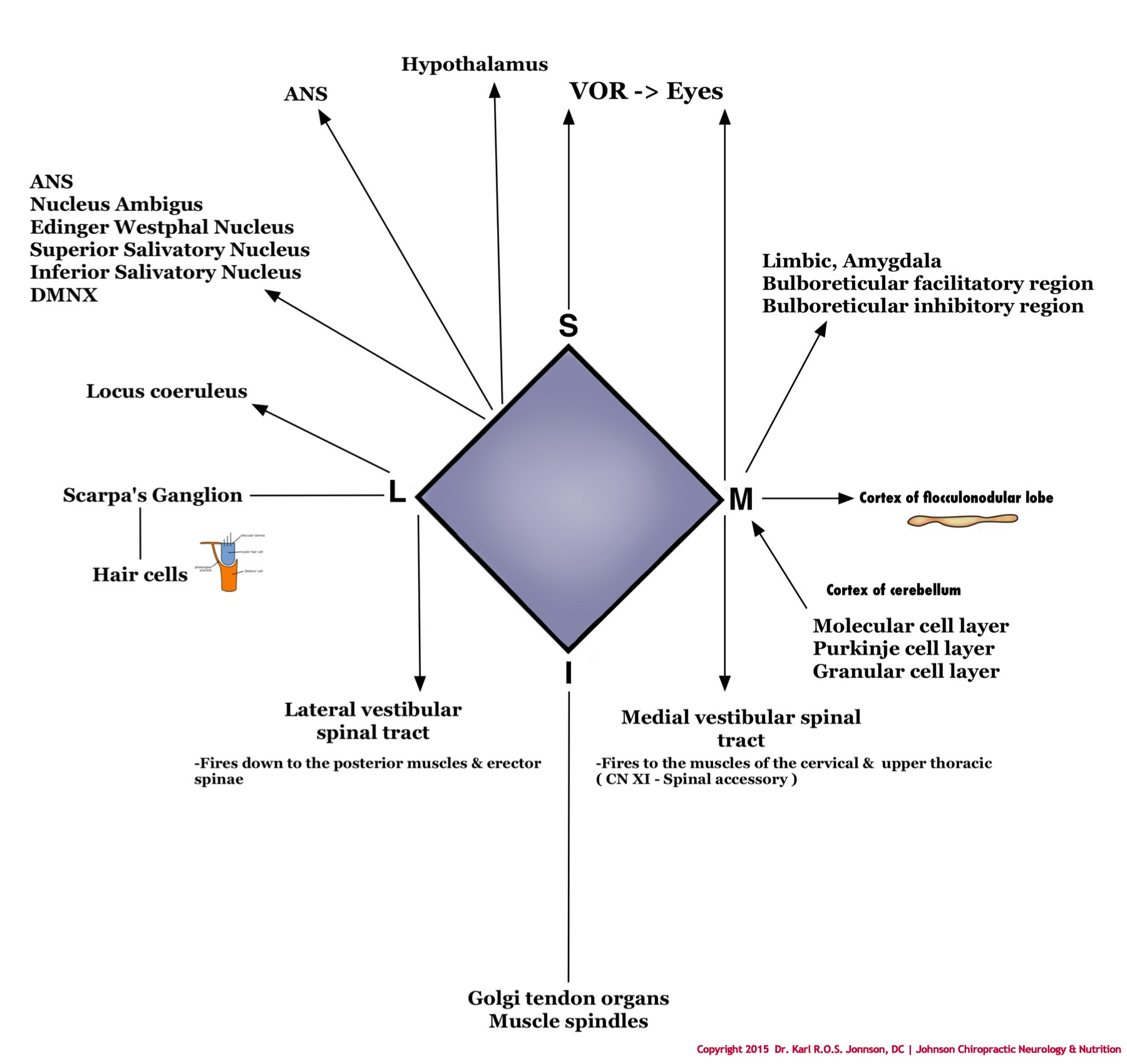
1. Joint Function and Mechano-Receptors:
- Joints, especially the spinal joints, are rich in mechano-receptors. The most notable receptors are the Golgi Tendon Organs and Muscle Spindle Cells.
- When joints are restricted, blocked, or fixated due to misalignments or other issues, they disrupt the mechano-receptor afferentation (the flow of information upstream to the brain).
- This disruption can result in changes to the way muscles are activated, a decrease in our ability to sense the position of our body parts, and difficulties maintaining proper posture. Essentially, the brain is forced to adapt to these limitations in order to effectively control the intricate movements of our body.
2. Muscle Coordination and Recruitment Order:
- Mechano-receptors within and around muscles play a vital role in muscle coordination.
- They detect changes in muscle length, tension, and force, enabling the brain to make real-time adjustments to muscle activity.
- Muscle recruitment order, which is essential for efficient movement and posture, is guided by mechano-receptor feedback.
3. Chiropractic Care and Mechano-Receptor Function:
- The spinal structure is a fascinating blend of robust bones, supple ligaments and tendons, powerful muscles, and exquisitely sensitive nerves. It possesses incredible strength to safeguard the delicate nerve roots, while also maintaining remarkable flexibility to enable movement in various directions. We often overlook the remarkable combination of strength, structure, and flexibility that our bodies possess in our daily lives—until something goes awry. When we experience spinal or extremity pain, we become determined to understand the cause and find ways to alleviate the discomfort and avoid future episodes.
- Chiropractic adjustments, specifically those utilized in the dynamic neurological-based approach, have the goal of enhancing joint function, resulting in improved muscle tone and a reduction or elimination of pain.
- Ensuring that joint function is restored or enhanced in all planes of movement is the defining characteristic of afferent-based neurological chiropractic care.
- Incorporating these adjustments not only aids in restoring balance to the mechano-receptor afferentation, but also improves muscle coordination and overall function.
The Importance of a Closed Kinematic Chain
A closed kinematic chain refers to a sequence of body segments that are connected in a fixed manner, such as during weight-bearing activities. It contrasts with an open kinematic chain, where the end of a limb is free to move independently. Regarding chiropractic care, the concept of a kinematic chain refers to the interconnectedness of body parts that have a significant impact on each other, ultimately facilitating unhindered and pain-free movement. Understanding the concept of a closed kinematic chain is crucial for comprehending the broader impact of chiropractic care on bodily function:
1. Weight-Bearing and Functional Movement:
- Activities that involve a closed kinematic chain, like standing, walking, and weightlifting, place unique demands on the musculoskeletal system.
- The functional stability required during closed kinematic chain activities relies on proper muscle coordination, joint function, and afferent input.
2. Chiropractic Care and Closed Kinematic Chains:
- Chiropractors using the dynamic neurological-based model recognize the significance of a closed kinematic chain.
- They focus on improving joint function, alignment, and mechano-receptor afferentation to enhance the body's ability to perform these weight-bearing activities with efficiency and reduced risk of injury.
- Assessing the impact of dysfunction in various body parts such as the feet, ankles, knees, hips, hands, wrists, elbows, and shoulders, and restoring mobility to these affected structures is crucial for achieving long-term improvement in spinal function.
- The evaluation process includes utilizing motion palpation techniques to assess joint mobility and function.
Evidence and Research Supporting Dynamic Neurological-Based Chiropractic
To establish the validity of the dynamic neurological-based chiropractic model and its emphasis on afferent input, mechano-receptor afferentation, and closed kinematic chains, let's explore some research findings and clinical evidence:
1. Clinical Case Studies:- Numerous chiropractors employing this model have reported successful outcomes in patients with a variety of conditions, including chronic pain, musculoskeletal disorders, and even neurological issues.
- These cases often highlight the role of restoring proper joint function and mechano-receptor feedback in improving patient well-being.
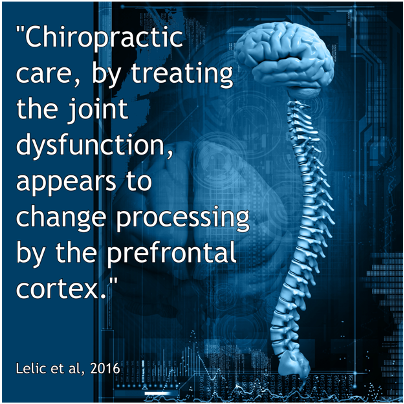
2. Functional MRI Studies:
- Functional magnetic resonance imaging (fMRI) studies have shown that chiropractic adjustments can have a significant impact on brain function.
- The adjustments appear to enhance sensorimotor integration, which plays a crucial role in motor control and coordination.
3. Biomechanical Research:
- Biomechanical research has explored the effects of joint dysfunction on muscle recruitment patterns and coordination.
- Studies have indicated that restricted or misaligned joints can lead to altered muscle activation, which can contribute to pain and reduced performance.
4. Patient Testimonials:
- Patient testimonials often serve as valuable anecdotal evidence of the effectiveness of dynamic neurological-based chiropractic care.
- These accounts frequently emphasize improvements in posture, mobility, pain relief, and overall quality of life.
Conclusion
The dynamic neurological-based chiropractic model offers a holistic and innovative approach to chiropractic care by emphasizing the critical role of the nervous system, mechano-receptor afferentation, and closed kinematic chains. Dr. L. John Faye, DC, has played a pivotal role in advancing this model, and his contributions have helped shape the field of chiropractic care.
Enhancing afferent input to the brain through the restoration of joint function and alignment is at the core of this approach. This, in turn, improves muscle coordination, recruitment patterns, and overall bodily function. The evidence, including clinical case studies, functional MRI research, and biomechanical studies, supports the effectiveness of this model in improving patient outcomes.
Chiropractic care that focuses on the dynamic neurological-based model not only offers pain relief but also contributes to the overall well-being and optimal functioning of the body. It provides a promising avenue for individuals seeking to enhance their health and quality of life through non-invasive and natural means.
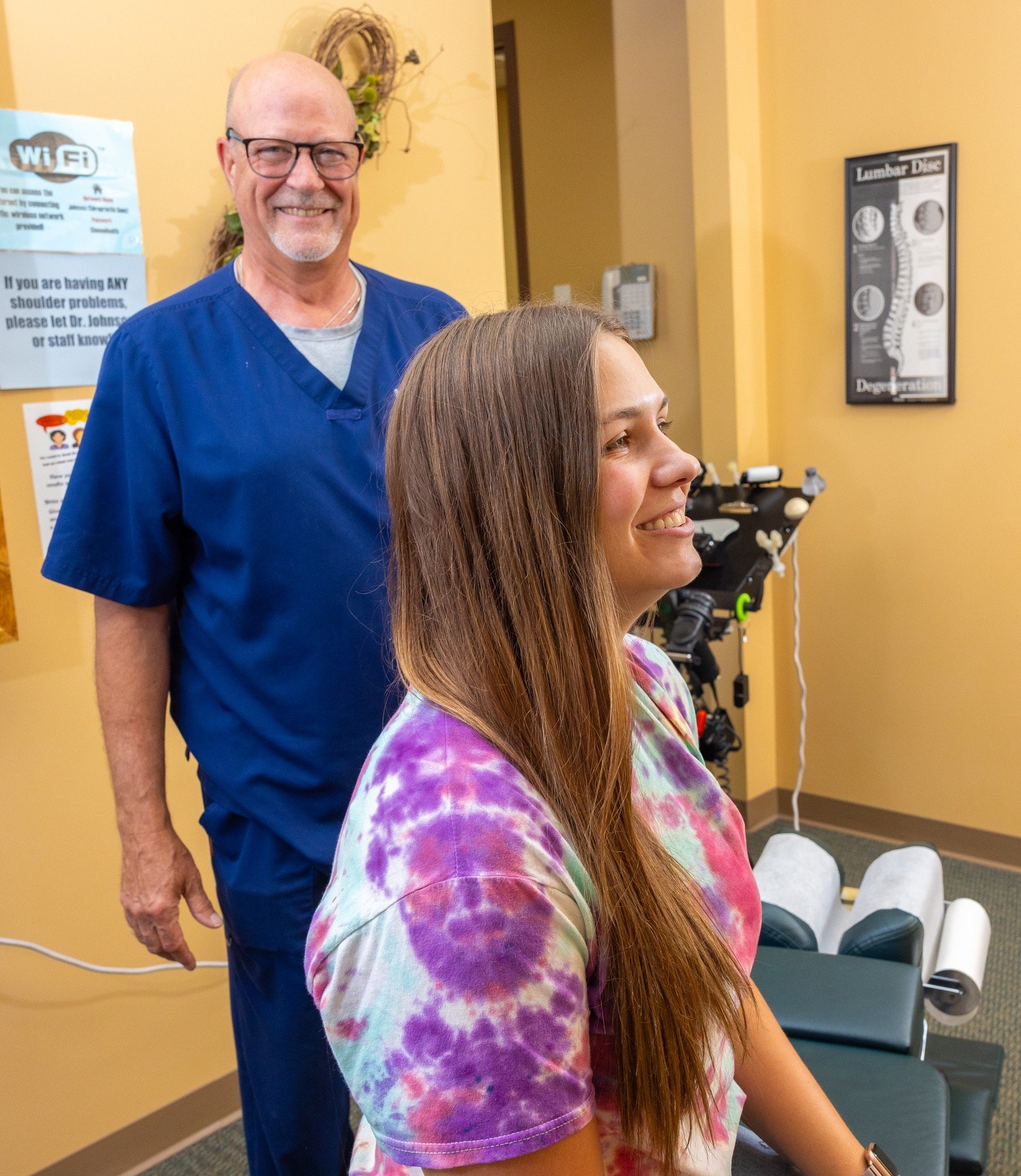
To delve deeper into my unique philosophy among healthcare providers, discover more about what sets me apart.
Always remember one of my mantras, "The more you know about how your body works, the better you can take care of yourself."
For more details about the natural approach I take with my patients, take a look at the book I wrote entitled: Reclaim Your Life; Your Guide To Revealing Your Body's Life-Changing Secrets For Renewed Health. It is available in my office or at Amazon and many other book outlets. If you found value in this article, please use the social sharing icons at the top of this post and please share with those you know who are still suffering with chronic health challenges, despite receiving medical management. Help me reach more people so they may regain their zest for living! Thank you!
ALL THE BEST – DR. KARL R.O.S. JOHNSON, DC – DIGGING DEEPER TO FIND SOLUTIONS
References:
- Haavik H, Murphy B. Subclinical neck pain and the effects of cervical manipulation on elbow joint position sense. Journal of Clinical Chiropractic Pediatrics. 2009;10(1):640-643.
- Cambron JA, Schneider M, Dexheimer JM, et al. A pilot randomized controlled trial of flexion-distraction dosage for chiropractic treatment of lumbar spinal stenosis. Journal of Manipulative and Physiological Therapeutics. 2014;37(7):396-406. doi:10.1016/j.jmpt.2014.06.001
- Lelic D, Niazi IK, Holt K, et al. Manipulation of dysfunctional spinal joints affects sensorimotor integration in the prefrontal cortex: A brain source localization study. Neural Plasticity. 2016;2016:3704964. doi:10.1155/2016/3704964
- Murphy DR, Morris CE. Promoting evidence-based practice in chiropractic education through a web-based tutorial. Journal of Chiropractic Education. 2002;16(1):44-45. doi:10.1017/S1047951100014212
- Müller R. O. (1954). Autonomics in chiropractic; the control of autonomic imbalance. Chiro Pub
- Homewood, A. E. (1981). The neurodynamics of the vertebral subluxation. The Parker Chiropractic Research Foundation.
- Humphreys BK, Delahaye M, Peterson CK. An investigation into the validity of cervical spine motion palpation using subjects with congenital block vertebrae as a 'gold standard'. BMC Musculoskelet Disord. 2004 Jun 15;5:19. doi: 10.1186/1471-2474-5-19. PMID: 15198806; PMCID: PMC441389.
- Marcotte J, Normand MC, Black P. The kinematics of motion palpation and its effect on the reliability for cervical spine rotation. J Manipulative Physiol Ther. 2002 Sep;25(7):E7. doi: 10.1067/mmt.2002.126472. PMID: 12214190.
- Cooperstein, R., Young, M. The reliability of spinal motion palpation determination of the location of the stiffest spinal site is influenced by confidence ratings: a secondary analysis of three studies. Chiropr Man Therap 24, 50 (2016). https://doi.org/10.1186/s12998-016-0131-x
- Lakhani E, Nook B, Haas M, Docrat A. Motion palpation used as a postmanipulation assessment tool for monitoring end-feel improvement: a randomized controlled trial of test responsiveness. J Manipulative Physiol Ther. 2009 Sep;32(7):549-55. doi: 10.1016/j.jmpt.2009.08.004. PMID: 19748406.
- Mieritz RM, Hartvigsen J, Boyle E, Jakobsen MD, Aagaard P, Bronfort G. Lumbar motion changes in chronic low back pain patients: a secondary analysis of data from a randomized clinical trial. Spine J. 2014 Nov 1;14(11):2618-27. doi: 10.1016/j.spinee.2014.02.038. Epub 2014 Mar 7. PMID: 24607844.
- Bakhtadze, Maxim & Patijn, J & Galaguza, Vladimir & Bolotov, D & Popov, A. (2011). Inter-examiner reproducibility of the segmental motion palpation springing test for side bending at level C2‐C3. International Musculoskeletal Medicine. 33. 8-14. 10.1179/1753615411Y.0000000001.
- Beynon AM, Hebert JJ, Walker BF. The interrater reliability of static palpation of the thoracic spine for eliciting tenderness and stiffness to test for a manipulable lesion. Chiropr Man Therap. 2018 Dec 4;26:49. doi: 10.1186/s12998-018-0218-7. PMID: 30524705; PMCID: PMC6278006.
- Breen A, Breen A. Uneven intervertebral motion sharing is related to disc degeneration and is greater in patients with chronic, non-specific low back pain: an in vivo, cross-sectional cohort comparison of intervertebral dynamics using quantitative fluoroscopy. Eur Spine J. 2018 Jan;27(1):145-153. doi: 10.1007/s00586-017-5155-y. Epub 2017 May 29. PMID: 28555313.
- Fisher BE, Piraino A, Lee YY, Smith JA, Johnson S, Davenport TE, Kulig K. The Effect of Velocity of Joint Mobilization on Corticospinal Excitability in Individuals With a History of Ankle Sprain. J Orthop Sports Phys Ther. 2016 Jul;46(7):562-70. doi: 10.2519/jospt.2016.6602. Epub 2016 Jun 6. PMID: 27266885.
- “Manipulation Activates Muscles of the Core,” William Morgan, DC. ACA News Nov. 14, 2014; http://drmorgan.info/blog/manipulation-activates-muscles-core/
- Gill NW, Teyhen DS, Lee IE. Improved contraction of the transversus abdominis immediately following spinal manipulation: a case study using real-time ultrasound imaging. Man Ther. 2007 Aug;12(3):280-5. doi: 10.1016/j.math.2006.06.014. Epub 2006 Sep 12. PMID: 16971162.;
- Marshall P, Murphy B. The effect of sacroiliac joint manipulation on feed-forward activation times of the deep abdominal musculature. J Manipulative Physiol Ther. 2006 Mar-Apr;29(3):196-202. doi: 10.1016/j.jmpt.2006.01.010. PMID: 16584943.
- Basbaum AI, Levine JD. The contribution of the nervous system to inflammation and inflammatory disease. Can J Physiol Pharmacol. 1991 May;69(5):647-51. doi: 10.1139/y91-096. PMID: 1863915.
- Gallo J, Raska M, Kriegova E, Goodman SB. Inflammation and its resolution and the musculoskeletal system. J Orthop Translat. 2017 Jul;10:52-67. doi: 10.1016/j.jot.2017.05.007. Epub 2017 Jun 3. PMID: 28781962; PMCID: PMC5541893.
- Lee HY, Wang JD, Chang HL, He YC, Chu MM, Chen LF. The association between asymmetric hip mobility and neck pain in young adults. J Manipulative Physiol Ther. 2013 Jul-Aug;36(6):364-8. doi: 10.1016/j.jmpt.2013.06.001. Epub 2013 Jul 3. Erratum in: J Manipulative Physiol Ther. 2013 Oct;36(8):555. Wang, Jung-Er [corrected to Wang, Jung-Der]. PMID: 23830708.
- Hicks GE, Sions JM, Velasco TO. Hip Symptoms, Physical Performance, and Health Status in Older Adults With Chronic Low Back Pain: A Preliminary Investigation. Arch Phys Med Rehabil. 2018 Jul;99(7):1273-1278. doi: 10.1016/j.apmr.2017.10.006. Epub 2017 Oct 27. PMID: 29111171; PMCID: PMC5923431.
- Maigne R. Low back pain of thoracolumbar origin. Arch Phys Med Rehabil. 1980 Sep;61(9):389-95. PMID: 6448030.
- Widmer J, Fornaciari P, Senteler M, Roth T, Snedeker JG, Farshad M. Kinematics of the Spine Under Healthy and Degenerative Conditions: A Systematic Review. Ann Biomed Eng. 2019 Jul;47(7):1491-1522. doi: 10.1007/s10439-019-02252-x. Epub 2019 Apr 1. PMID: 30937563.
- Yang J, Lee B, Kim C. Changes in proprioception and pain in patients with neck pain after upper thoracic manipulation. J Phys Ther Sci. 2015 Mar;27(3):795-8. doi: 10.1589/jpts.27.795. Epub 2015 Mar 31. PMID: 25931733; PMCID: PMC4395717.
- Haavik H, Murphy B. The role of spinal manipulation in addressing disordered sensorimotor integration and altered motor control. J Electromyogr Kinesiol. 2012 Oct;22(5):768-76. doi: 10.1016/j.jelekin.2012.02.012. Epub 2012 Apr 6. PMID: 22483612.
- Lakhani E, Nook B, Haas M, Docrat A. Motion palpation used as a postmanipulation assessment tool for monitoring end-feel improvement: a randomized controlled trial of test responsiveness. J Manipulative Physiol Ther. 2009 Sep;32(7):549-55. doi: 10.1016/j.jmpt.2009.08.004. PMID: 19748406.
- Seaman DR, Winterstein JF. Dysafferentation: a novel term to describe the neuropathophysiological effects of joint complex dysfunction. A look at likely mechanisms of symptom generation. J Manipulative Physiol Ther. 1998 May;21(4):267-80. PMID: 9608382.
- Leemann S, Peterson CK, Schmid C, Anklin B, Humphreys BK. Outcomes of acute and chronic patients with magnetic resonance imaging-confirmed symptomatic lumbar disc herniations receiving high-velocity, low-amplitude, spinal manipulative therapy: a prospective observational cohort study with one-year follow-up. Journal of Manipulative and Physiological Therapeutics. 2014 Mar-Apr;37(3):155-163. DOI: 10.1016/j.jmpt.2013.12.011. PMID: 24636109.
- Annen M, Peterson C, Leemann S, Schmid C, Anklin B, Humphreys BK. Comparison of Outcomes in MRI Confirmed Lumbar Disc Herniation Patients With and Without Modic Changes Treated With High Velocity, Low Amplitude Spinal Manipulation. J Manipulative Physiol Ther. 2016 Mar-Apr;39(3):200-9. doi: 10.1016/j.jmpt.2016.02.012. Epub 2016 Apr 1. PMID: 27046146.


